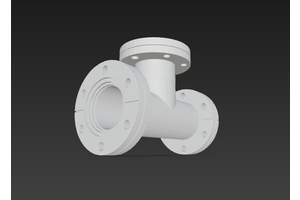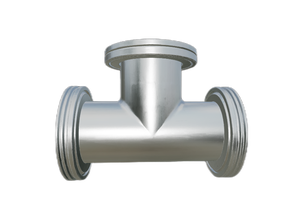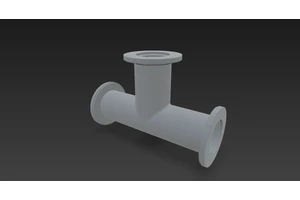Working principle of vacuum generator
A vacuum generator is a new, efficient, clean, economical, small vacuum component that uses a positive pressure source to generate negative pressure, which makes it very easy and convenient to obtain negative pressure in places with compressed air or in places where positive and negative pressure are required in a pneumatic system. Vacuum generators are widely used in industrial automation, machinery, electronics, packaging, printing, plastics and robots. The traditional use of vacuum generators is to cooperate with vacuum suction cups to adsorb and transport various materials, especially suitable for adsorbing fragile, soft and thin non-ferrous, non-metallic materials or spherical objects. In such applications, a common feature is that the required air extraction volume is small, the vacuum requirement is low and intermittent operation. The author believes that the analysis and study of the suction mechanism of the vacuum generator and the factors affecting its working performance have practical significance for the design and selection of positive and negative pressure gas circuits.
1. Working principle of vacuum generator
The working principle of the vacuum generator is to use the nozzle to spray compressed air at high speed, forming a jet at the nozzle outlet, generating a rolling and suction flow. Under the rolling and suction action, the air around the nozzle outlet is continuously sucked away, causing the pressure in the adsorption chamber to drop below atmospheric pressure, forming a certain vacuum degree. As shown in Figure 1.
Schematic diagram of the working principle of vacuum generator
Figure 1 Schematic diagram of the working principle of the vacuum generator
From fluid mechanics, it can be seen that the continuous equation of incompressible air gas (gas inflow at low speeds can be approximately considered as incompressible air)
A1v1= A2v2
Where A1, A2-----the cross-sectional area of the pipeline, m 2
v1, v2--------------------------------------------------------------------------------------------------------------------------
From the above formula, we can see that the cross-section increases, the flow rate decreases; the cross-section decreases, the flow rate increases.
For horizontal lines, according to the Bernori ideal energy equation for incompressible air is
P1+1/2ρv1 2 =P2+1/2ρv2 2
Where P1, P2----the corresponding pressure at cross-section A1, A2, Pa
v1, v2-----The corresponding flow velocity at cross section A1, A2, m/s
ρ----The density of air, kg/m 2
From the above formula, we can see that the flow rate increases and the pressure decreases. When v2>>v1, P1>>P2. When v2 increases to a certain value, P2 will be less than one atmospheric pressure, that is, negative pressure is generated. Therefore, negative pressure can be obtained by increasing the flow rate and suction force.
According to the Mach number M1 of the nozzle outlet (the ratio of outlet flow rate to local sound speed), vacuum generators can be divided into subsonic tube type (M1<1), sound-speed nozzle type (M1=1) and supersonic nozzle type (M1>1). Subsonic nozzle and sound-speed nozzle are both contracted nozzles, while supersonic nozzle type must be a first contraction and then dilated nozzle (i.e., Laval nozzle). In order to obtain the maximum suction flow or the highest pressure at the suction inlet, the vacuum generator is designed as a supersonic nozzle type.
2. Analysis of suction performance of vacuum generator
2.1. Main performance parameters of vacuum generator
① Air consumption: refers to the flow rate qv1 flowing out of the nozzle.
② Suction flow: refers to the air flow qv2 sucked from the suction port. When the suction port is open to the atmosphere, its suction flow is the largest, which is called the maximum suction flow qv2max.
③ Pressure at the suction inlet: It is recorded as Pv. When the suction inlet is completely closed (such as the suction cup sucking the workpiece), that is, when the suction flow is zero, the pressure in the suction inlet is the lowest, and it is recorded as Pvmin.
④Asorption response time: The aspiration response time is an important parameter indicating the working performance of the vacuum generator. It refers to the time from the opening of the reversing valve to the system circuit to reach a necessary vacuum degree.
2.2. The main factors affecting the performance of vacuum generators
The performance of the vacuum generator is related to many factors such as the minimum diameter of the nozzle, the shape of the shrinkage and diffusion tube, the diameter of the corresponding position and the pressure of the gas source. Figure 2 shows the relationship curve between the pressure, suction flow, air consumption and supply pressure at the suction inlet of a vacuum generator. The figure shows that when the supply pressure reaches a certain value, the pressure at the suction inlet is lower, and the suction flow reaches the maximum. When the supply pressure continues to increase, the pressure at the suction inlet increases, and the suction flow decreases.
① Characteristic analysis of the maximum suction flow rate qv2max: The qv2max characteristic of a relatively ideal vacuum generator requires that within the commonly used supply pressure range (P01=0.4--0.5MPa), qv2max is at its maximum value, and the change is smooth with P01.
② Analysis of the characteristics of pressure Pv at the suction inlet: The Pv characteristics of a relatively ideal vacuum generator are required to be within the commonly used supply pressure range (P01=0.4--0.5MPa), and Pv is at the minimum value, and the change is smooth with Pv1.
③ Under the condition that the suction inlet is completely closed, the relationship between the pressure Pv at the suction inlet and the suction flow under specific conditions is shown in Figure 3. In order to obtain a more ideal matching relationship between the pressure and suction flow at the suction inlet, it can be designed as a multi-stage vacuum generator in series.
④ The length of the diffusion pipe should ensure that the various wave systems at the nozzle outlet are fully developed, so that approximately uniform flow can be obtained on the cross-section of the diffusion pipe outlet. However, the pipe is too long and the friction loss of the pipe wall increases. It is more reasonable for pipe workers to be 6-10 times the diameter of the pipe. In order to reduce energy loss, an expansion section with an expansion angle of 6°-8° can be added to the outlet of the straight pipe of the diffusion pipe.
⑤The suction response time is related to the volume of the adsorption chamber (including the volume of the diffusion chamber, the adsorption pipeline, the suction cup or sealed chamber, etc.), and the leakage amount of the adsorption surface is related to the magnitude of the pressure at the required suction inlet. For pressure requirements at a certain suction inlet, if the volume of the adsorption chamber is smaller, the response time is shorter; if the pressure at the suction inlet is higher, the adsorption volume is smaller, and the surface leakage is smaller, the suction response time is also shorter; if the adsorption volume is large and the suction speed is faster, the nozzle diameter of the vacuum generator should be larger.
⑥ The vacuum generator should reduce its gas consumption (L/min) while meeting the usage requirements. The gas consumption is related to the supply pressure of compressed air. The greater the pressure, the greater the gas consumption of the vacuum generator. Therefore, when determining the pressure duty at the suction inlet, you should pay attention to the relationship between the supply pressure and the gas consumption of the system. Generally, the pressure at the suction inlet generated by the vacuum generator is between 20kPa and 10kPa. At this time, the pressure of the supply gas gauge increases again, and the pressure at the suction inlet will not decrease again, but the gas consumption increases. Therefore, reducing the pressure at the suction inlet should be considered from the perspective of controlling the flow rate.
⑦ Sometimes due to the shape or material of the workpiece, it is difficult to obtain a lower pressure at the suction inlet. The pressure at the suction inlet is increased due to the inlet intake from the edge of the suction cup or through the workpiece. In this case, it is necessary to correctly select the size of the vacuum generator so that it can compensate for the pressure at the suction inlet caused by leakage. Since it is difficult to know the effective cross-sectional area at the time of leakage, a simple test can be used to determine the pressure increase at the suction inlet caused by the leakage. Since it is difficult to know the effective cross-sectional area at the time of leakage, the leakage amount can be determined through a simple test. The test loop consists of workpieces, vacuum generators, suction cups and vacuum meters . The display readings of the vacuum meter and then check the performance curve of the vacuum generator, so it is easy to know the leakage amount.
When considering leakage, the characteristic curve of the vacuum generator is very important for the correct determination of the vacuum generator. Leakage is sometimes inevitable. When there is a leakage, the method of determining the size of the vacuum generator is as follows: Adding the nominal intake flow rate with the leakage flow rate can determine the size of the vacuum generator.
3. Methods to increase the suction flow of vacuum generator
3.1. Vacuum generators are divided into high vacuum type and high suction flow type. The former has a large curve slope and the latter is flat. When the nozzle throat diameter is constant, to obtain a high vacuum, the suction flow will inevitably be reduced, and in order to obtain a large suction flow, the pressure at its suction inlet will inevitably be increased.
3. In order to increase the suction flow of the vacuum generator, a multi-stage enlarged pressure tube can be designed. If two three-stage diffuser vacuum generators are connected in parallel, as shown in the figure, the suction flow will be doubled.
4. Conclusion
4.1. Vacuum generator is a small and economical vacuum generating element, which is used in places with positive pressure gas sources, greatly simplifying the vacuum circuit. Therefore, it is conducive to reducing the manufacturing cost of the machine, improving the reliability of the machine, achieving high-speed and automation of the machine, and has broad application prospects.
4.2. During the system design process, the various performance parameters of the vacuum generator should be comprehensively considered and performance indicators that match the system should be selected. Generally, the better gas supply pressure is: 0.4--0.5MPa, and the pressure at the suction inlet is generally: 20kPa---10kPa.




